A Foundation for Minimum Quantity Lubrication
MQL can provide significant savings and improved performance in the right applications. Here are some important considerations when looking at this technology.
This article is the result of a combination of information gathered during a recent interview with Radu Pavel, Ph.D., and a presentation he gave about the basics of Minimum Quantity Lubrication (MQL) and where this technology best fits in today’s machine shop. Dr. Pavel is chief technology officer at TechSolve Inc. and Optis LLC, focusing on manufacturing process design and optimization as well as process monitoring and control.
Every shop would like to save money and get better performance from its machine tools. TechSolve assists these shops with identifying applicable technologies to make it happen. MQL is one such technology that, when applied correctly and with proper planning, can provide significant savings from multiple angles.
MQL may be recognized by different names such as micro-lubrication, micro-dosing, mist coolant and near-dry machining. For the most part, these denominations have been replaced by the generally accepted term “minimum quantity lubrication.” As this name suggests, the quantity of the applied lubricant is reduced to the least amount necessary to be effective. The volume flow rate with MQL is often less than 50 ml/hour, which is a small amount when compared with conventional wet machining, which can use as much as 12,000 liters of coolant per hour. Yes, that amount is a little bit extreme, but there are applications, such as grinding, that can require quite a bit of fluid.
MQL technology allows considerable reduction of machining costs, along with other important benefits such as longer tool life, improved environmental protection and reduction of health risks for machine operators. While the technology is not necessarily used a lot in the high production screw machine environment, it can be used effectively in some cases. MQL has a lot of applications in certain turning and milling operations, both in through-the-tool work and when sprayed from an external system.
Keep it Cool
MQL is more than simply turning down the flow rate of the coolant line. It is the process of mixing metalworking fluid and air, creating an aerosol that is either directly fed to the point of application (through the tool) or sprayed via a compressed gas stream into the cutting area. The idea is to lubricate and cool the cut to the extent necessary without using any more fluid than is needed. The pressure of the aerosol also assists in clearing chips away.
Typically, the main categories of MQL systems are external and through-the-tool. External feed systems are simple to use, and installation and operation can be done with low investment costs. They do not require special tools or modifications of machine tools or spindles, and they have a rapid response to changes in settings. However, they do not work well when a shadowing effect occurs (such as for deep holes or deeper cuts), setup and adjustment options are limited, and the nozzle can sometimes be blocked by chips.
Through-the-tool systems allow for better lubrication at the cutting point without the concern of the shadowing effect. They allow a rapid response to change in settings and contain the dispersion of aerosol better than the external systems. However, they sometimes require special tooling, machine or spindle modifications and, overall, require higher investments. One- and two-channel systems are two basic through-the-tool methods available for mixing the air and lubricant before delivering them at the point of cut.
Especially for external systems, the position of the nozzle to the tool and point of cut (such as angle and distance) offer opportunity for optimization. The position will play a role in how well the surface of the tool is covered with fluid and lubricated. The pressure, flow and aerosol mix are the other factors that will regulate tool coverage and lubrication.
While MQL uses oil in most cases, TechSolve is developing a system that can use water-based fluids as well. This system is efficient for cutting difficult materials such as titanium and Inconel alloys, which present challenges because they do not conduct heat well. One of the disadvantages of oil is that it has an insulation property, tending to hold heat in. However, it lubricates better than water-based fluids, reducing the friction force, and therefore reducing heat in that way. In some difficult to cut materials, though, the importance of cooling may outweigh that of lubrication, so water-based fluids may be preferred.
If a shop already works with oil, there should be no reason to change to water-based fluids for the purposes of MQL. But fluids for MQL are engineered differently than those used in flood-coolant applications. The properties of these dedicated fluids are designed to optimize adhesion to the tool and evaporation. These characteristics are significant to the effectiveness of the process. Although these special fluids are generally more expensive than standard metalworking oils, so much less is consumed that the initial expense can be recovered.
Characteristics
The effectiveness of MQL can vary from one application to another, and the proper characteristics can be debated. Clearly, only a small amount of fluid is being delivered through the system, but specifically how much may be dependent on a number of factors. Most commonly, MQL systems distribute between 5 and 80 ml/hour, but values as low as 0.2 ml/hour and as high as 500 ml/hour (or even higher in rare cases) have been reported. Droplet size can be as small as 0.1 micron and as large as 50 microns. Typically, smaller droplets are preferred to allow a good aerosol mix and delivery.
Aerosol pressure is also important and can be adjusted to optimize the machining performance. For typical MQL systems using shop air, pressures between 4 and 10 bars have been reported in literature; however, the range varies as a function of technology. For the more sophisticated systems, the balance between pressure and flow will be adjusted depending on the nozzle shape and size and the process being assisted.
MQL is more process sensitive than flood cooling. Finding the “sweet spot” can lead to a significant increase in efficiency and savings. Therefore, some optimization for the cutting parameters may be in order at times. In other cases, the sweet spot is fairly large and superimposes over the flood fluid workzone. In these latter cases, switching between MQL and flood may be an easy process.
Why MQL?
The concept of MQL is not new. Studies and trials with mist-coolant applications go back more than two decades, and some of the theories even show up much longer ago than that. But some notable disadvantages of flood fluid systems have increased momentum for MQL in recent years.
Besides the cost involved with flood fluid systems (which is high in many instances), equipment variety, contamination and waste are some of the other unfavorable characteristics of these systems.
Flood fluid systems need equipment to recirculate, filter, test and treat the coolant to keep it viable. Contamination from bacteria, tramp oil and swarf are concerns related to the disposal of spent coolant, which is typically classified as toxic waste. Its disposal is regulated, so related costs need to be considered. In fact, the cumulative cost of metalworking fluids can be as high as 15 percent of the total cost to produce a part.
Another issue with flood coolant is the mess it can create. Invariably, coolant ends up covering more than only the cutting tool and workpiece. Machines, floors and finished parts get coated as well. The U.S. Occupational Safety and Health Administration (OSHA) and the U.S. National Institute for Occupational Safety and Health (NIOSH) reported in the late 1990s that the permissible exposure level (PEL) for metalworking fluid aerosol concentration is 5 mg/m3 and 0.5 mg/m3, respectively. However, a study by Bennett and Bennet in 1985 showed that the oil-mist level in U.S. automotive parts manufacturing facilities was estimated in the 20 to 90 mg/m3 range with the use of conventional lubrication by flood coolant.
The efforts to reduce toxic waste and to create a sustainable working environment have vitalized the search for ways to reduce energy consumption for metalworking fluid supply. The increase in environmental awareness has made the minimization of these fluids an important goal.
Other Advantages
MQL technology was developed to address many of the inconveniences and concerns posed by flood fluid systems. The biggest and most obvious advantage of MQL is that it uses less fluid and involves less cost. But when properly applied, the use of an engineered fluid that is supplied at the right point and in the right quantity can significantly reduce tool wear. Increases in tool life of more than 50 percent (even approaching 100 percent in some cases) have been reported.
It can also lead to an increase in consistency and integrity of machined surfaces—better, more consistent finish and reduced residual stresses. With the right lubrication and with chips breaking instead of wrapping around the part, the cutting process is leaner, improving the surface finish. MQL can also help to eliminate built-up edge in certain cutting operations. Reducing tool wear also contributes to more consistent finishes.
With MQL, the chips end up dryer and cleaner. Sensor switches last much longer because they’re not being splashed with fluid. The cost of buying and disposing of conventional cutting fluids is reduced, and less energy is consumed. In general, the overall cost is lower than conventional flood coolant applications. Although not completely proven, MQL has also shown signs of allowing for higher feed rates and higher RPMs.
Wise Implementation
Despite the advantages demonstrated, MQL is not a universal solution for all machining processes. It has a number of limitations and can present its own set of challenges that need to be considered by anyone thinking of implementing the technology. The purpose of cutting fluid in a machining operation is to cool the cut and workpiece, reduce friction, and wash away the chips.
While MQL can do a good job at reducing friction, cooling capabilities often lack when compared with flood cooling, and chip evacuation is significantly reduced.
The process can be efficient, but it is not always as simple as turning it on. It requires some adjustments and optimization to find the right recipe for a given application, generating and delivering the proper aerosol. Without the right setting for fluid, air and tool pressure, satisfactory results are unlikely.
High gas pressure can also be a concern in relation to the design of the MQL system. The use of pressurized air or other gases requires appropriate equipment as well as rigid maintenance and safety procedures. Also, the pressurized aerosol can generate noise that can become an inconvenience for the operator. The cost of air or gas needs to be taken into consideration as well.
Depending on the application and the machining space, emissions of gas and metal components are still a potential hazard. This issue can be dealt with by installing filters and air vacuum systems for the machine. However, this additional equipment increases costs and energy consumption.
Other considerations before implementing MQL technology include increased tooling costs for through-tool capabilities, potential need for spindle and machine fluid line modifications and reduced chip clearing capability.
With proper planning, MQL can be applied in a variety of operations and applications, including turning, milling, drilling and related operations (such as reaming and tapping), sawing, routing and broaching. However, it is still not well suited for deep-hole drilling, energy intensive processes such as grinding, many difficult to machine metals, and special operations such as honing and small-hole drilling. It is important to be selective in its implementation, using it where the benefits are clear.
Related Content
Precision Machining Technology Review September 2023
Production Machining’s September 2023 technology showcase includes some of the latest technology from Lyndex-Nikken Inc., Kurt Workholding, Master Fluid Solutions, Rego-Fix Tool Corporation and Jorgensen Conveyor & Filtration Solutions.
Read MoreBiodegradable Lubricants Eliminate Cleanup Costs
Bio-Air Tool Lubricants perform in many applications, offer better natural lubricity than petroleum-based oils and are safer for employees and the environment.
Read MoreAutomate Coolant Management, Collect Data to Optimize Machining Operations
The future of coolant management lies in better control through automation and applying real-time data analysis and insights.
Read MoreBio-Air Tool Lubricants Eliminate Reportable Incidents, Cleanup Costs
These air tool oils provide excellent lubrication for both rotary and reciprocating types of air tools, such as chipping hammers, impact wrenches, air motors, grinders, reamers, drills and more.
Read MoreRead Next
Metalworking Fluid Management and Best Practices
Cutting metal is a complex process involving many critical factors to be successful. Correctly applied metalworking fluids, including oils or coolant, is one of these critical factors.
Read MoreA Tooling Workshop Worth a Visit
Marubeni Citizen-Cincom’s tooling and accessory workshop offers a chance to learn more about ancillary devices that can boost machining efficiency and capability.
Read More5 Aspects of PMTS I Appreciate
The three-day edition of the 2025 Precision Machining Technology Show kicks off at the start of April. I’ll be there, and here are some reasons why.
Read More



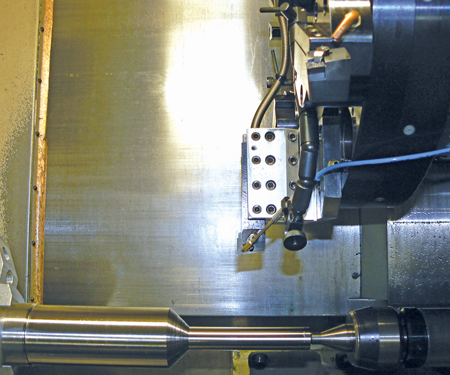
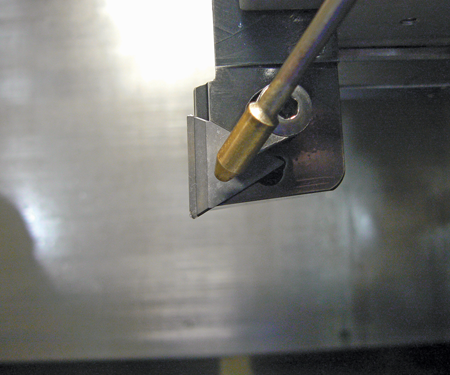
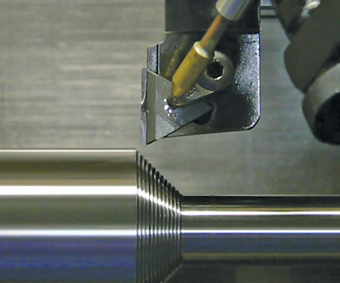
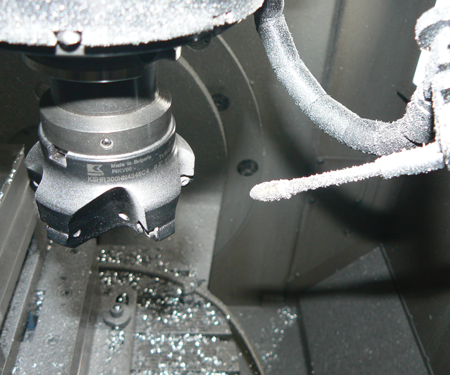













.png;maxWidth=300;quality=90)
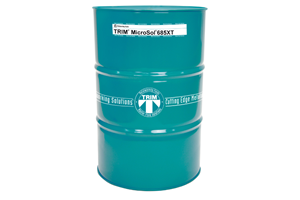






.png;maxWidth=970;quality=90)